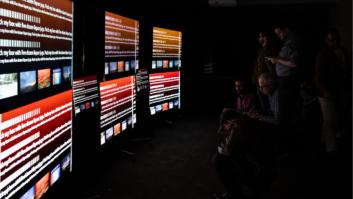The California Energy Commission is slated today to unveil the new mandatory regulations and controls on the limiting the power consumption of all televisions sold in state. Following a 45-day public comment period, the commission is expected to approve the measure in early November.
The new rules would obviously have a significant impact on high-performance televisions sold and installed in the state, and would significantly impact the business of the residential electronic systems industry.
The California Energy Commission has argued that big-screen televisions could make it harder for California to keep pace with electricity demand. The first-in-the-nation TV efficiency standards would require electronics retailers and integrators to sell only energy-efficient models starting in 2011. Even tougher efficiency criteria would follow in 2013.
The rules, which took more than a year to develop, are designed to reduce Californians’ electricity bills by $8.1 billion over a 10-year-period. That works out to $30 per display per year, according to commission officials.
It will also help California utilities head off the need to build more power plants. TVs already account for 10 percent of residential energy use in California, driven largely by surging demand for large-screen TVs. Strict state mandates for cutting greenhouse gas emissions are further pressuring officials to act.
Environmentalists have applauded those efforts. But industry groups, including the Consumer Electronics Association and CEDIA, dispute the notion that the new efficiency rules would benefit consumers. About a quarter of currently available television models would have to be pulled from store shelves, which could raise television prices and put some CEDIA members and wholesalers out of business.
The CEA’s senior director for technology policy, Doug Johnson, told the LA Times that the regulations would force TV buyers to buy banned sets from out-of-state dealers over the Internet, depriving California retailers of customers and state and local governments of needed sales tax and corporate income tax revenue.
The commission “appears to be carelessly rushing this flawed regulatory proposal that sets arbitrary limits on TV energy usage,” Johnson told the Times. He said CEA’s members have come up with a number of ideas for making their products more efficient but want to do them voluntarily.
But some flat-panel-TV makers said they would have no trouble hitting the higher efficiency threshold and that TV buyers wouldn’t see prices rise. Hundreds of top-selling large-screen and very large-screen digital models already comply with the proposed efficiency standards.
“The average Californian should not see a cost premium,” Bruce Berkoff, chairman of the LCD TV Assn., said in a letter to the Energy Commission. “They will, however, benefit from dozens to hundreds of dollars in energy cost savings over their TV’s lifetime, thus making the proposed standard extremely cost-effective for the state of California.”
The proposed standards would require televisions with 58-inch screens or smaller to comply with a minimum efficiency standard by January 1, 2011, and a more stringent one by January 1, 2013.
Sets with screens larger than 58 inches would initially be exempt from the new standards. But they would be subject to a subsequent rule-making process.






